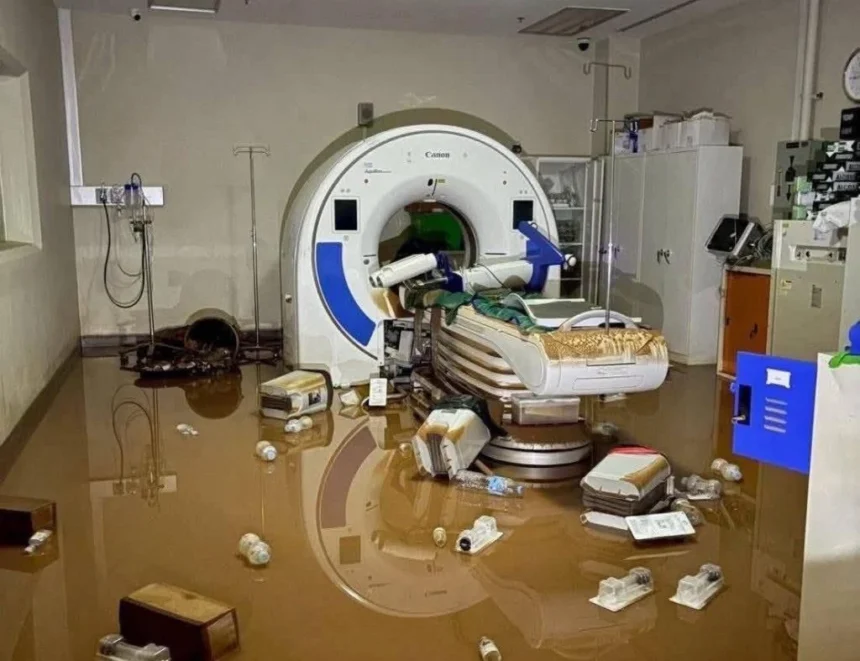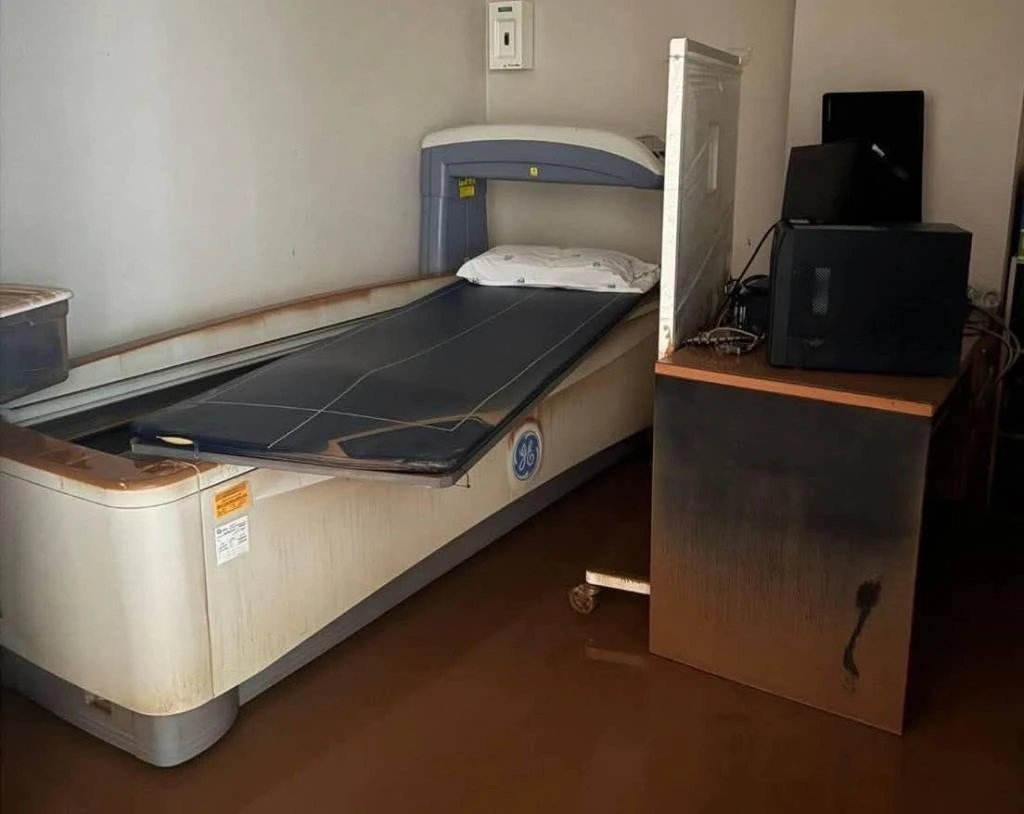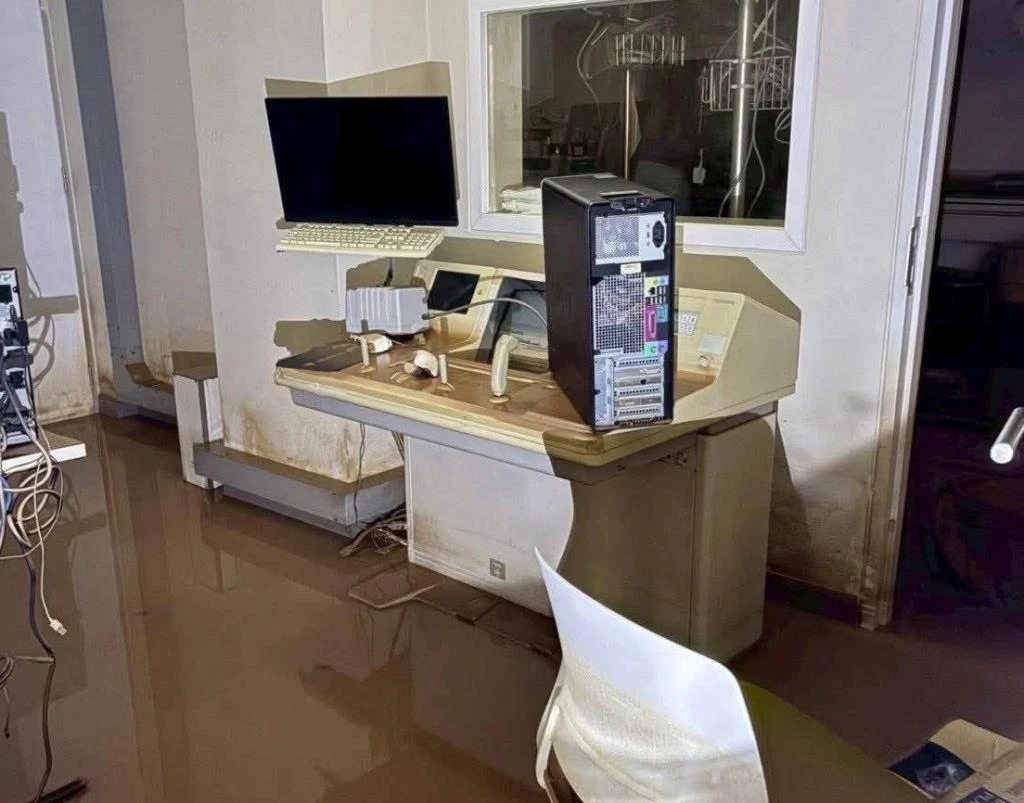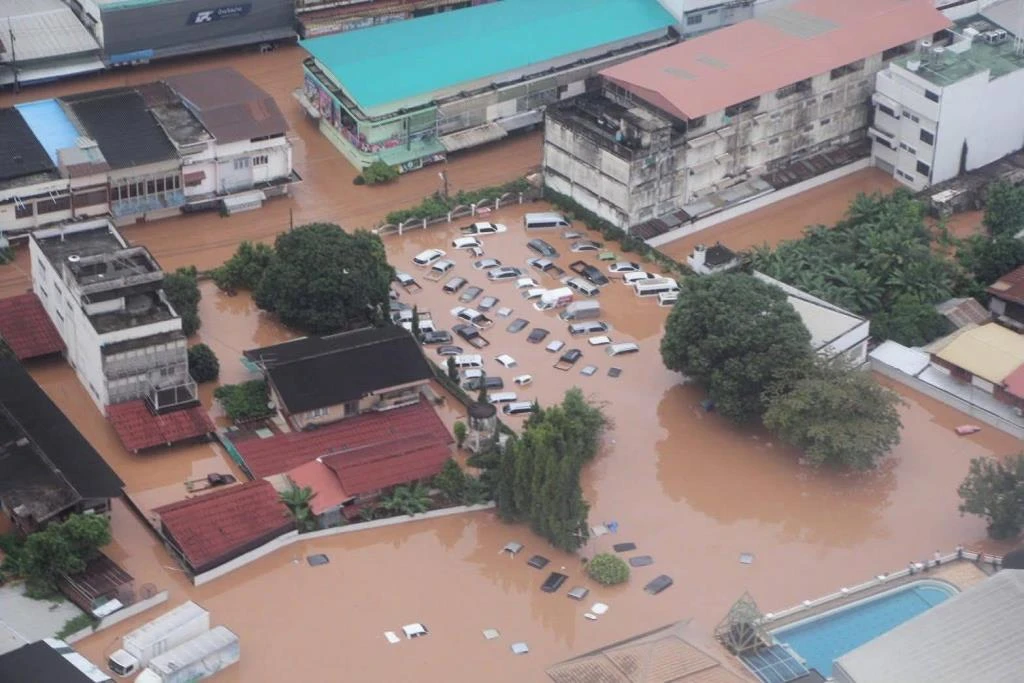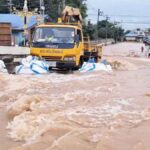NAN– Floodwaters in Nan are slowly receding, and signs of heavy damage are now clear. Nan Hospital has been hit especially hard, with the CT scanner, several medical devices, computers and more submerged for nearly two days.
It’s still uncertain if any of the damaged equipment can be restored. Teams on site are clearing debris and mud in a push to get the main buildings ready for new patients as soon as possible.
On 26 July 2025, reporters provided an update after flood levels in Nan city began to drop. As water levels eased, authorities moved quickly to assess the damage. Inspections showed Nan Provincial Hospital faced serious problems, with floodwater inside the building reaching over a metre deep for almost 48 hours.
This led to major losses since many high-value medical machines, which could not be moved in time, were left standing in water. The hospital’s CT scanner was flooded on the first day, and staff are still working out if it can be saved.
Other vital devices were also impacted after remaining underwater for several hours.
Hospital workers continued to help patients despite the challenging conditions, wading through water to reach those in need. Once the situation improved, hospital managers organized a thorough cleaning to let staff enter the patient wards and prepare for new admissions.
The teams are also inspecting the full extent of the building and equipment damage as they begin recovery.
Due to the impact, Nan Hospital postponed exams for two key civil service nursing and public health positions, as well as scholarship contract signings for the 2025 nursing course. Announcements about rescheduling are expected once things return to normal.
Nan Hospital remains closed because its ground floor still has about 90 cm of standing water. Several villages and communities near the Nan River have been flooded for over three days, leaving many without help and affecting thousands of households.
Water was falling slowly, with a drop of only around 10 cm each hour. Around Nan Hospital, floodwater is still 90 centimetres deep. Normal hospital services remain suspended.
Communities next to the Nan River, like Tha Wang Pha, Sri Phum, Ban Sop Nong and Ban Don Tan, still have water levels between one and one and a half metres. More than 500 households remain underwater, waiting for help.
In Nan city, areas such as Ban Phra Koet, Tha Chang and Mueang Len are also badly affected. Residents in these areas have been without running water and electricity for up to three days, with growing shortages of food and clean drinking water.
The city centre, which is the main business district, is still flooded above one metre. Many locals cannot yet return home to check on their property.
Mayor Surapol Thiansut reported that Nan city has been receiving ongoing support from the government and private agencies. They have prioritized evacuating hospital patients and staff from the worst-hit areas. Troops from the 3rd Development Division in Phitsanulok have sent 13 soldiers and five rescue boats to help out.
Extra boats have also arrived from the Disaster Relief Centre and the military district, as well as from Phichai Dabhak Hospital in Uttaradit, to support rescue efforts.
The mayor asked anyone in safe homes to stay put until help can reach them, as rescue teams are still unable to enter some areas.
Many groups, including government teams, private companies and local volunteers, are working together to prepare and deliver meals to those in need. Wat Pa Nanthaburi Yanasangwararam and Wat Phra That Chae Haeng have set up temporary shelters and have kitchens to provide meals for flood victims, handing out rice, dry food, cooking equipment and other essentials to village committees for further distribution.
This flood is now being called the worst Nan has ever seen. Most local people say it is the most severe and widespread they can remember, caused by the heavy rain and strong wind brought in by Tropical Storm Wipha. The damage across the province is significant, and recovery will take time.




